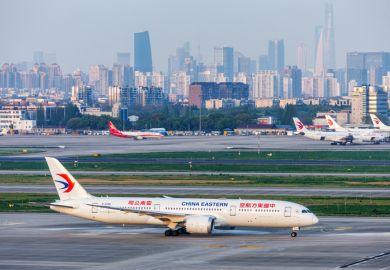More than 1,000 foreign scholars who applied for asylum in Australia last year had arrived as students at least seven years earlier, newly published figures suggest.
Of over 5,400 applications for protection visas lodged by students or former students in 2024, 1,059 came from people who had gained entry under now expired visa subclasses which closed for applications in mid-2016.
The caseload includes 624 applications from people who had originally come as higher education students, 260 as vocational education students, 117 as English language students and 32 as school students. Another 83 asylum applicants had arrived as students’ guardians.
A further 26 protection bids came from people who had applied before July 2016 to study under scholarship schemes approved by Australia’s foreign or defence ministers, ostensibly to contribute to the home nations’ security or development.
While international education lobbyists often claim that 84 per cent of overseas students return home after completing their courses and perhaps gaining some local work experience, the new figures – contained in a document released in response to a 5 February Senate order – illustrate the challenges officials face in expelling those who are determined to stay.
“People who are left over, don’t want to go home and have run out of options, go to asylum,” said Abul Rizvi, a former Immigration Department deputy secretary who has since completed a doctorate on migration policy. “That’s what happens at the end of a student visa boom. It takes years to play out.”
He said Treasury assumptions that most of these people would leave over the next few years were unrealistic, noting that asylum bids from foreign students in Canada – where, like Australia, politicians are trying to reduce the numbers of international students and other migrants – had surged.
Canada reportedly amassed almost 14,000 such applications in the first nine months of 2024, up from about 12,000 in 2023 and less than 2,000 before the pandemic.
Rizvi said students who were determined to stay typically hopped between student visas before seeking post-study work rights (PSWR) visas and eventually permanent residency, but this was becoming increasingly difficult after Canberra banned temporary graduates from moving to fresh student visas while still in Australia.
Legal action is another option. Australia’s Administrative Review Tribunal received 22,762 appeals last year from people in Australia who had been refused new student visas or had their current visas cancelled, the document says.
It says over 100,000 PSWR visas expired last year, up from about 90,000 in 2022 and around 50,000 in other years. Fewer than 8,000 PSWR visa holders departed Australia in 2024.
Of a little over 200,000 temporary graduates in Australia at the end of January this year, about 45 per cent had between two and five years remaining on their visas.
The document was one of three released to the Senate in response to disclosure orders moved the previous week by shadow education minister Sarah Henderson. Home affairs minister Tony Burke refused the most contentious and labour-intensive of the demands – visa grant and refusal figures for each of the 1,500-odd institutions registered to enrol foreign students – citing potential for “commercial harm”.
Release of that information could affect students’ perceptions of the colleges’ quality and skew the “evidence level” system used to assess immigration risk, Burke said.
Register to continue
Why register?
- Registration is free and only takes a moment
- Once registered, you can read 3 articles a month
- Sign up for our newsletter
Subscribe
Or subscribe for unlimited access to:
- Unlimited access to news, views, insights & reviews
- Digital editions
- Digital access to THE’s university and college rankings analysis
Already registered or a current subscriber?








